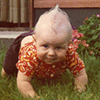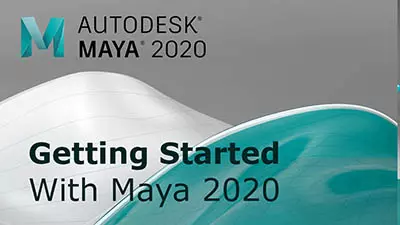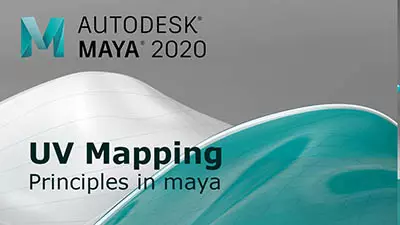Introduction to Maya - Rendering in Arnold
This course will look at the fundamentals of rendering in Arnold. We'll go through the different light types available, cameras, shaders, Arnold's render settings and finally how to split an image into render passes (AOV's), before we then reassemble it i
#
1
14-01-2003
, 12:26 AM
Hypershade
#
2
14-01-2003
, 12:29 AM
Guest
Posts: n/a

#
3
14-01-2003
, 12:30 AM

#
4
14-01-2003
, 12:32 AM
#
5
14-01-2003
, 12:40 AM
Guest
Posts: n/a
yeahOriginally posted by kbrown
where is he btw?
 I miss him to....
I miss him to....
#
6
14-01-2003
, 02:15 AM
I do not support Bush! Nor Saddam! Long live UN!
#
7
14-01-2003
, 05:35 AM
um
#
8
14-01-2003
, 06:21 AM
then when it's in the window select what you want to apply it to go to the hypershade right click the shader and apply material to selection i think that's what you want

--
adl's is back
 i heard that the strike costs venezula $120million a day
i heard that the strike costs venezula $120million a day 
Thanks for wasting your time reading this line.
#
9
15-01-2003
, 12:48 AM
#
10
15-01-2003
, 01:58 AM
-- Mark
#
11
15-01-2003
, 02:04 AM
Guest
Posts: n/a
#
12
15-01-2003
, 03:16 AM
SM Alumni
Join Date: Jun 2002
Join Date: Jun 2002
Posts: 509
Darkon
Red bellows of flame have blackened my stones
Convulsing my frame and cracking my bones
Hell's dragons of steel who roar in their chains
Crawl into my caves to suck out my veins.....
-The Mountain P.F.M.
#
13
15-01-2003
, 03:30 AM
Image1- Render Globals window set to custom/low quality. Default lighting.
Image2 - Production Quality/high quality. Default lighting.
Image3 - Production Quality/high quality. Two lights on either side of the object. Intensity set to 2.
Image4 - Production Quality/high quality. Two lights on either side of the object. Intensity set to 1.5.
The 3rd image is about as close as I can get to the original. I tend to get a greenish reflection instead of a light-blue one and don't know enough about shaders to change it. Once again, if you want to know exactly how it's made, I'll post it up here.
Last edited by Darkware; 15-01-2003 at 03:33 AM.
#
14
15-01-2003
, 03:52 AM
#
15
15-01-2003
, 05:40 AM
1) Window>Rendering Editors>Hypershade.
2) As you can see, hypershade is split up into two sections. The top section is where your shaders will appear. The bottom section (work area) is where you create them. If you cannot see them both, click one of the buttons in the upper right-hand corner of hypershade. These three buttons will change your view.
3) Create>Materials>Phonge.
CREATING A BUMP MAP
4)Create>General Utilities>Bump 3D.
5) As you can see, both the phonge and bump 3D appear in the work area once you create them. You can double click on these swatches to view their attributes and move them around by dragging them. Moving around in hypershade is basically the same as in perspective view. The only change is that you have to hold down Alt+Middle-Mouse Button+Left Mouse Button to zoom in and out.
6) Middle-mouse drag the bump 3D swatch over to the phonge.
7) A menu pops up. Click “bump map.” You have now connected the bump 3D to the phonge. A line traveling from one swatch to the other shows you this.
8) Now you’re probably wondering why we just did that. Obviously, there is no change in the look of the phonge from the bump map. This is because bump maps are only good if they have a texture assigned to them. That being said, choose Create>3D Textures>Volume Noise.
9) A “place 3D texture1” swatch is created and is linked to “VolumeNoise1.” Select the “place 3D texture” swatch and delete it. (sometimes it is unnecessary to delete this swatch, but this particular shader was created this way)
10) Middle-Mouse drag the Noise swatch to Bump 3D. It automatically connects and you should immediately see the bump map change the phonge.
ADDING COLOUR
11) Now it’s time to change the colour. Choose Create>2D Textures>Ramp.
12) Double click the “Ramp1” swatch. The attributes window pops up. Change the “type” to “Tartan Ramp”, the Interpolation to “Smooth”, and the selected Position to .025. Don’t ask me why Denfo chose to change that last one so little. I see no difference.
13) Anyway, time to change the colour. Select the blue circle to the left of the ramp. The “selected colour” tab directly below the ramp changes to that colour. Click that colour box and the Colour Chooser window pops up. Under the “sliders” tab, there are several values we need to change. (the following values are the exact values of the Denfo shader. Realistically, it serves no purpose to change each value to the exact numbers shown below. To save time, simply round each number and use that value. (ei. – instead of typing 202.93 just type 202) it will save you a lot of time)
14) Change “H” to 202.93 ----- Change “S” to .648 ----- Change “V” to .522 ----- Leave “A” the same. (1) Choose Accept.
15) Select the red circle. Click the “selected colour” box. Change “H” to 201.82 ----- “S” to .648 ----- “V” to .49 ----- and once again leave “A” the same. Choose Accept.
16) Select the Green circle. Click the “selected colour” box. Change “H” to 147.6 ----- “S” to .226 ----- “V” to .42 ----- and once again leave “A” the same. Choose Accept.
17) Close the Ramp1 Attributes Editor Window.
18) Now that you finally have the colour you want for your shader, it’s time to connect it to the phonge swatch. Middle-Mouse drag the ramp1 swatch to the Phonge swatch. A window pops up. Select “color.” You should see the ramp1 colour take effect on the phonge immediately.
ADDING TRANSPARENCY
19) The transparency for this particular shader isn’t very noticeable if you ask me, but here’s how you do it. Choose Create>2D Textures>Ramp. Delete the “Place 2D Texture2” swatch attached to it.
20) Double click the Ramp2 swatch. Change “type” to Tartan Ramp, Interpolation to Smooth, Selected Position to .015, U Wave to .116, and V Wave to .14
21) Just as we did the last ramp, we need to change the colour of this one.
Top Circle – H to 201.82 ----- S to .301 ----- V to .286
Middle Circle – H to 147.6 ----- S to .226 ----- V stays the same
Bottom Circle - H to 202.93 ----- S to .309 ----- V to .287
22) Close the Ramp2 Attributes Editor Window.
23) Middle-mouse drag the Ramp2 swatch to the phonge swatch. Once again, a window pops up. Select “transparency.”
24) That’s it. You’re done. That is exactly how that shader of yours is created. The image below is what it should look like in the end.
//Also, now that you’ve created this shader, you probably want to see what it looks like in action. Create a sphere, select it, right-click the phonge1 shader in the top section of hypershade, and select “assign material to selection.” Don’t forget (if you’re using May’s renderer) to change the Render Globals window to get good render results.//
*Other tips to learn after you have mastered the above.*
1) When we created the bump 3D swatch, we added a Noise Volume texture to it. You don’t have to always use Volume Noise. For a bump 3D swatch, you can attach any 3D texture to it. You could have also used a bump 2D swatch in place of the bump 3D. The difference is that you would have to attach a 2D texture to the bump 2D.
2) On the left-hand side of hypershade, there is a colomn. Above it, there is a button. If you click and hold it, a menu will pop up. You may select a category from it and drag any swatches from the colomn over to the work area.
3) As you might have noticed, there is a tab labeled “shader library” to the right of “work area.” This is where Maya stores all of it’s precreated shaders. You can browse through the library and drag one of the textures from it to the top section of hypershade. You can then use it as a texture for an object.
4) If you want to modify a shader you see in the top section of hypershade, right-click it and select “graph.” This will graph the shader in the work area, allowing you to see what it looks like.
5) Adldesigner (we miss him so) still has a good tutorial in the “How I Did It” section here at Simply Maya. You would benefit from it should you choose to read it all.
- Darkware -
Posting Rules Forum Rules
Similar Threads
hypershade and the "Shader Library"
by Tristanartform in forum Maya Basics & Newbie Lounge replies 8 on 15-03-2008
please help ...selecting material in hypershade
by mikemac in forum Maya Basics & Newbie Lounge replies 3 on 21-01-2008
can't get mental ray Nodes bar in Hypershade
by Gun-Kata in forum Lighting & Rendering replies 1 on 02-06-2005
Unusual Hypershade Nodes
by Darkware in forum Maya Materials & Textures replies 3 on 14-06-2003
outliner, hypershade, etc...act wierd in XP?
by dax3d in forum Maya Technical Issues replies 3 on 21-01-2003
Topics
Free Courses
Full Courses
VFX News
How computer animation was used 30 years ago to make a Roger Rabbit short
On 2022-07-18 14:30:13
Sneak peek at Houdini 19.5
On 2022-07-18 14:17:59
VFX Breakdown The Man Who Fell To Earth
On 2022-07-15 13:14:36
Resident Evil - Teaser Trailer
On 2022-05-13 13:52:25
New cloud modeling nodes for Bifrost
On 2022-05-02 20:24:13
MPC Showreel 2022
On 2022-04-13 16:02:13












